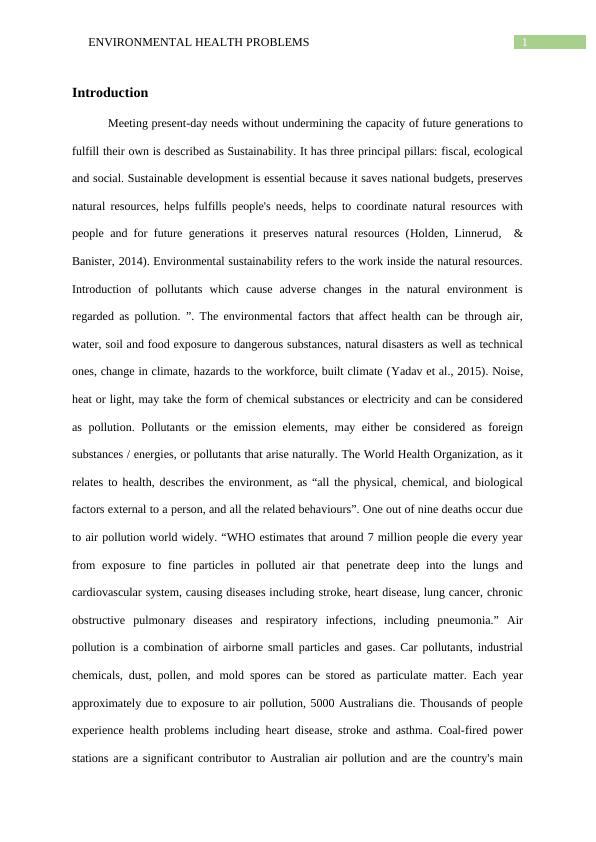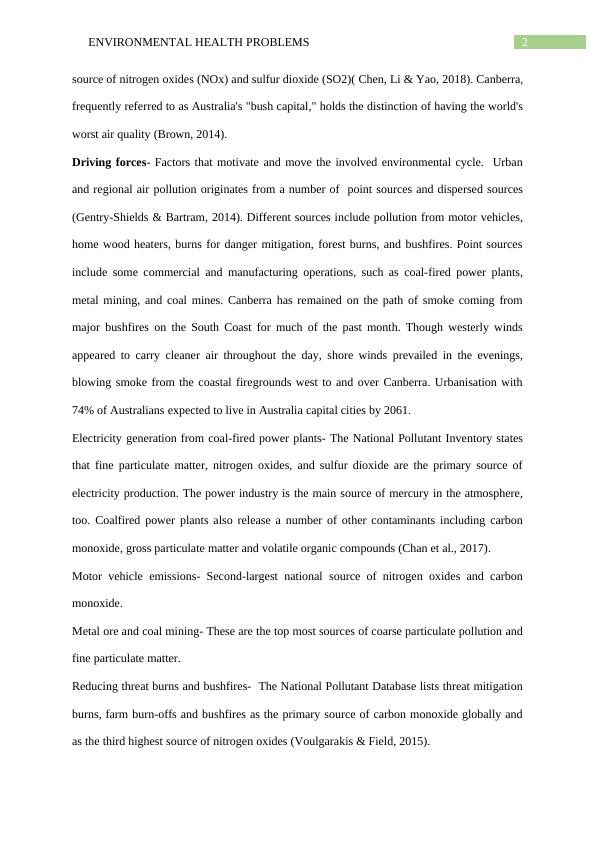Introduction toEnvironmental Public Health Tracking
This assignment requires a report on environmental risk assessment in a specific geographic region and one of the environmental health issues.
10 Pages2593 Words101 Views
Added on 2022-08-25
Introduction toEnvironmental Public Health Tracking
This assignment requires a report on environmental risk assessment in a specific geographic region and one of the environmental health issues.
Added on 2022-08-25
ShareRelated Documents
End of preview
Want to access all the pages? Upload your documents or become a member.
Australian Fire - Research Report
|8
|1821
|17
Types of Air Contaminants and Control Measures at Acme Manufacturing Co.
|15
|2683
|427
Environmental Health Assignment (Doc)
|4
|1715
|248
Air Pollution Effects on Health - PDF
|6
|1912
|141
Air Quality Monitoring and Controlling: Types of Pollution Control Techniques
|38
|5747
|209
Environmental Factors and Health Promotion for Infants
|12
|701
|273



